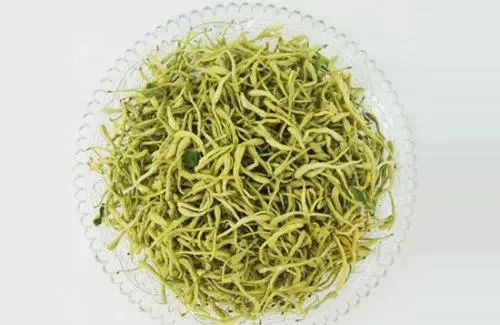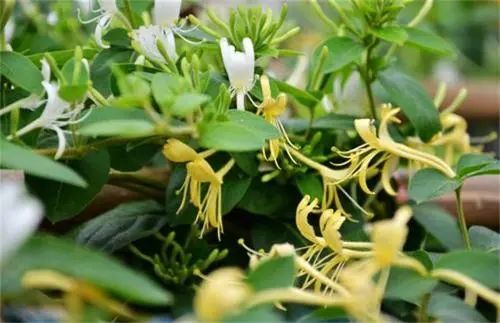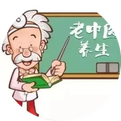 Name: Jin Yin Hua (Honeysuckle), Yin Hua, Shuang Hua
Name: Jin Yin Hua (Honeysuckle), Yin Hua, Shuang Hua
Taste and Properties: Sweet in flavor, cold in nature; enters the Lung, Stomach, and Heart meridians.
When Jin Yin Hua first blooms, it is pure white like silver, and after 2-3 days it turns golden yellow. The contrast of old and new yellow and white gives it its name. It can clear heat and detoxify while dispersing exterior pathogens, making it a key herb for treating all types of abscesses and sores. Therefore, ancient practitioners referred to Jin Yin Hua as the “Little Immortal of the Apothecary”.
According to the Compendium of Materia Medica, Jin Yin Hua can be used for “all wind-heat conditions and various toxic swellings, abscesses, scabies, and other malignant sores, dispersing heat and detoxifying.” Modern pharmacological studies have proven that Jin Yin Hua has broad-spectrum antibacterial properties, can reduce inflammation, lower fever, increase gastrointestinal motility, lower blood lipids, and stop bleeding.
Jin Yin Hua Profile
Jin Yin Hua is also known as Sheng Yin Hua, Tu Yin Hua, Jin Qian Hua, and Yin Hua. It commonly grows in hilly areas, valleys, and forest edges, and can also be cultivated artificially, primarily produced in Shandong, Henan, and Anhui provinces. It belongs to the Caprifoliaceae family, a perennial semi-evergreen climbing woody vine. The medicinal part is the dried flower buds, which are generally harvested in early summer before blooming, dried in the sun or in the shade, and used raw; or they can be sulfur-fumigated and then dried. Modern research has found that Jin Yin Hua mainly contains chlorogenic acid, tannins, inositol, linalool, and other components.
Functions and Indications:
Functions: Clears heat and detoxifies, disperses wind-heat.
Indications: 1. Used for the initial stage of warm diseases, wind-heat colds, sore throat, pneumonia, etc.
2. Used for abscesses and sores that belong to Yang conditions. 3. Used for heat-toxicity causing bloody dysentery. Also
Also
Identification of Authenticity:
Authentic Jin Yin Hua is rod-shaped, thicker at the top and thinner at the bottom, slightly curved, with a surface that is yellow-white or green-white, densely covered with short soft hairs, occasionally with leaf-like bracts. The calyx is green, with five lobes at the tip, the lobes have hairs about 1 millimeter long, and the open corolla is tubular with a two-lipped shape, with five yellow stamens attached to the tube wall, and one hairless ovary.
One counterfeit is Hua Su Xin flower, which is high-footed and dish-shaped, thicker at the top and thinner at the bottom, with a light yellow-white surface, green calyx covered with soft hairs, lobes that are linear and equal in length to the calyx tube, and a hairless corolla with five lobes that are short and round or lanceolate.
Another counterfeit is Ji Gu Xiang flower, which is high-footed and dish-shaped, with a yellow-white surface, hairless calyx, and 8-10 linear lobes.
Precautions: Avoid use in cases of cold spleen and stomach or pus-filled sores with clear discharge.
Medicinal Diet:
1. Nourishing Yin, clearing heat, detoxifying, and benefiting the throat.
Jin Yin Hua and Mai Men Dong Egg: 10 grams of Jin Yin Hua, 10 grams of Mai Men Dong (Ophiopogon), 100 grams of fresh mushrooms, 100 grams of shredded pork, appropriate amount of dried mushrooms, 1 egg, and suitable amounts of oil, salt, and monosodium glutamate, mixed well and steamed for 15 minutes. Suitable for patients with chronic pharyngitis.
2. Clearing heat and detoxifying.
Jin Yin Hua Congee: 30 grams of Jin Yin Hua, decocted in water, filtered to retain the juice, added to glutinous rice, and cooked into congee. Suitable for heat-toxicity sores, sore throat, wind-heat colds, etc., and can prevent heat stroke.
3. Anti-inflammatory and throat-clearing.
Jin Yin Hua Honey Juice: 30 grams of Jin Yin Hua, decocted in water, filtered to retain the juice, and added honey. Suitable for acute bronchitis.
4. Dispelling wind-heat, clearing the liver, and brightening the eyes.
Jin Yin Hua Eye Brightening Tea: 9 grams of Jin Yin Hua, 9 grams of Che Qian Ye (Plantago), 9 grams of Frosted Mulberry Leaf, 9 grams of Bai Zhi (Angelica Dahurica), decocted in water (lightly boiled), filtered to retain the juice, and then added an appropriate amount of sugar to drink instead of tea. Suitable for eye redness and swelling, photophobia, and excessive tearing caused by wind-heat invasion.
5. Clearing heat, draining water, and moistening the intestines.
Jin Yin Hua Da Huang Tea: Jin Yin Hua and Da Huang (Rhubarb) in a 3:1 ratio, brewed as tea, honey can be added as appropriate.
(Ancient and Modern Recipes)
1. Treating oral ulcers and pharyngitis.
15 grams of Jin Yin Hua and 3 grams of Sheng Gan Cao (Licorice), decocted in water and used for gargling.
2. Clearing heat and draining dampness.
30 grams of Jin Yin Hua and 100 grams of Pu Gong Ying (Dandelion), soaked in warm water, mashed, and juiced, divided into two doses for morning and evening. Suitable for elderly vaginal inflammation due to damp-heat.
3. Treating mumps.
30 grams of Jin Yin Hua and 30 grams of Ban Lan Gen (Isatis), decocted in water, one dose daily for 3-4 days.
4. Clearing heat and detoxifying, resolving phlegm, and benefiting the throat.
30 grams of Jin Yin Hua, 14 grams of Shan Dou Gen (Sophora), 1 gram of Borax, and 9 grams of Gan Cao, decocted in water and slowly held in the mouth. Suitable for acute tonsillitis, local redness, swelling, pain, fever, and headache.
Clearing heat and detoxifying herbs are a class of medicines primarily used to clear heat toxins, fire toxins, and epidemic toxins, including Jin Yin Hua, Lian Qiao (Forsythia), Pu Gong Ying, Ye Ju Hua (Wild Chrysanthemum), Ban Lan Gen, Chuan Xin Lian (Andrographis), Bai Hua She She Cao (Hedyotis), Yu Xing Cao (Houttuynia), Xiong Dan (Bear Bile), and Lu Dou (Mung Bean). They can be used to treat sore throat, nasal abscesses, mumps, heat-toxicity diarrhea, abscesses, scabies, and insect or snake bites, as well as burns and scalds. Modern research has shown that clearing heat and detoxifying herbs have varying degrees of antimicrobial effects and can combat various bacteria without easily developing resistance. Some herbs also have anti-inflammatory, antipyretic, and antiviral effects. In clinical applications of these herbs, if the patient has severe heat, they should be combined with heat-clearing and fire-draining herbs; if dampness is also present, they should be combined with damp-draining or drying herbs; if there is concurrent qi and blood deficiency, they should be paired with qi-tonifying and blood-nourishing herbs. Additionally, it should be noted that most clearing heat and detoxifying herbs are cold in nature and can easily harm the spleen and stomach, so they should not be taken in excess or for prolonged periods; treatment should cease once the illness is resolved.
More exciting recommendations:
These five types of people should not eat eggs frequently.
Peach consumption taboos: Who should avoid eating peaches?
The benefits of eating century eggs for health.
↓↓↓ For more exciting content, please click 【Read the original text】

